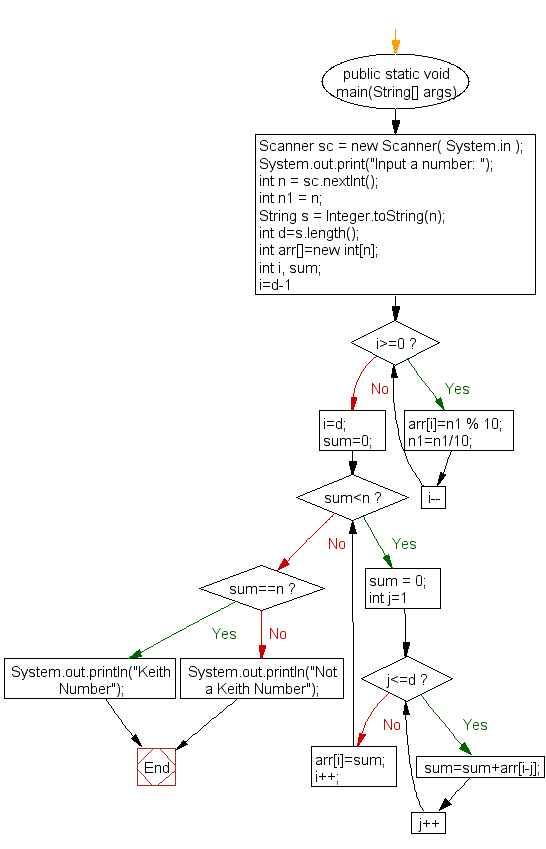Java: Check whether a number is a Keith Number or not
Check Keith Number
Write a Java program to check whether a number is a Keith Number or not.
In recreational mathematics, a Keith number or repfigit number (short for repetitive Fibonacci-like digit) is a number in the following integer sequence:
14, 19, 28, 47, 61, 75, 197, 742, 1104, 1537, 2208, 2580, 3684, 4788, 7385, 7647, 7909, 31331, 34285, 34348, 55604, 62662, 86935, 93993, 120284, 129106, 147640, 156146, 174680, 183186, 298320, 355419, 694280, 925993,
Test Data
Input a number: 75
Sample Solution:
Java Code:
import java.util.Scanner;
public class Example26 {
public static void main(String[] args) {
Scanner sc = new Scanner( System.in );
System.out.print("Input a number: ");
int n = sc.nextInt();
int n1 = n;
String s = Integer.toString(n);
int d=s.length();
int arr[]=new int[n];
int i, sum;
for(i=d-1; i>=0; i--)
{
arr[i]=n1 % 10;
n1=n1/10;
}
i=d; sum=0;
while(sum<n)
{
sum = 0;
for(int j=1; j<=d; j++)
{
sum=sum+arr[i-j];
}
arr[i]=sum;
i++;
}
if(sum==n)
System.out.println("Keith Number");
else
System.out.println("Not a Keith Number");
}
}
Sample Output:
Input a number: 75 Keith Number
Flowchart:

For more Practice: Solve these Related Problems:
- Write a Java program to verify if a number is a Keith number by generating its digit sequence until the number is reached or exceeded.
- Write a Java program to generate all Keith numbers within a specified range using iterative loops.
- Write a Java program to implement a Keith number checker using a queue to simulate the digit sequence.
- Write a Java program to optimize Keith number detection by caching intermediate sequence sums.
Go to:
PREV : First 15 Pell Numbers.
NEXT : First 20 Hamming Numbers.
Java Code Editor:
Contribute your code and comments through Disqus.
What is the difficulty level of this exercise?
Test your Programming skills with w3resource's quiz.
